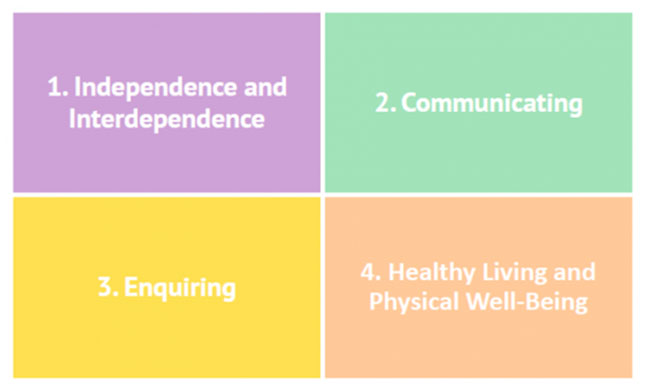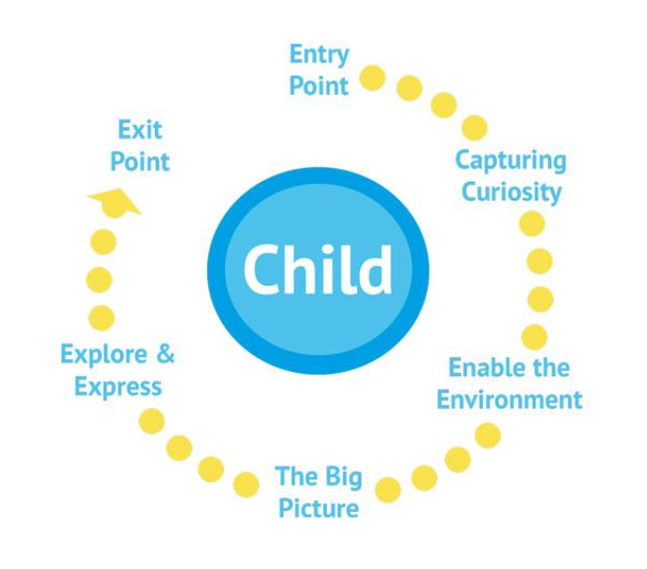Curriculum
Curriculum
The International Early Years Curriculum (IEYC) is a child-centered and research informed curriculum for 2-5+ year old. The IEYC recognizes best practice and the developmental needs of early years education and enables teachers/practitioners to embrace the interconnected nature of learning.
The overriding purpose of the IEYC is to help children develop their knowledge, skills, and increasing understanding to support their development in early years. The teacher should know what knowledge, skills and increasing understanding needs to be taught but also to embrace the children’s own ideas and understand the direction they wish to take their learning in. The result would then prepare learners for deeper learning.
Learning Principles I
- The earliest years of life are important in their own right.
- Children should be supported to learn and develop at their own unique pace.
- Play is an essential aspect of all children’s learning and development.
- Learning happens when developmentally appropriate, teacher-scaffolded and child-initiated experiences harness children’s natural curiosity in an enabling environment.
- Independent and interdependent learning experiences create a context for personal development and are the foundation of international mindedness.
- Knowledge and skills development lead to an increasing sense of understanding when children are provided with opportunities to explore and express their ideas in multiple ways.
- Ongoing assessment, in the form of evaluation and reflection, is effective when it involves a learning-link with the home.
- Learning should be motivating, engaging and fun, opening up a world of wonder for children where personal interests can flourish.
Learning Strands
Each activity suggested in the IEYC covers a wide range of Learning Strands, therefore providing a holistic approach to learning and development.

- Independence and interdependence: This strand focuses on developing personal, social and emotional development. The strand links to the IEYC Personal Goals and the IEYC International Dimension. This strand enables children to see themselves as unique individuals with a cultural heritage.
- Communicating: This strand focuses on developing a broad range of communication skills including language development, early literacy, early mathematics, ICT and computing, expressive arts and creativity.
- Enquiring: This strand focuses on developing the skills of enquiry through exploring people and the world. It will support children in understanding the similarities and differences in people, living things, the environment and materials. Children will be encouraged to investigate, pose questions and explore ideas.
- Healthy living and Physical Well-Being: This strand focuses on developing a positive attitude to health, self-care and physical activity.
The IEYC Learning Process
The IEYC Learning Process outlines the route to be taken through a unit. The stages are defined as the ‘Entry Point’; ‘Capturing Curiosity’; ‘Enable the Environment’; ‘The Big Picture’; ‘Explore and Express’; and ‘Exit Point’. The IEYC comprises a diverse range of exciting and engaging units of learning, which are designed around the IEYC Learning Process

- The Entry Point launches each new IEYC unit and should be planned to enable children to explore new experiences in exciting and memorable ways. Each IEYC unit of learning has a suggested Entry Point idea which can be adapted according to children’s development needs. The IEYC encourages teachers to be creative and use their own ideas to enhance the Entry Point.
- Capturing Curiosity is achieved when teachers are aware of what children are curious to learn and then the unit is adapted to enhance opportunities.
- To Enable the Environment is the process of planning and developing relevant indoor and outdoor learning spaces to create the positive climate for enquiry and learning to take place.
- The Big Picture provides the children with an overview of each unit of learning. It prepares children for a new learning experience whilst at the same time helps establish connections with previous learning. It gives teachers an overview of why the theme is important and links to child development.
- Explore and Express aims to provide children with opportunities to engage in activities that have been holistically designed around the Learning Strands.
- The Exit Point at the end of the IEYC provides opportunities for children to reflect, share and celebrate what they have learnt. Exit Points are also used to share and demonstrate learning with parents and the wider community
IEYC Learning goals
| 1 | Enquiry | To find out more and show an interest |
| 2 | Resilience | To keep on going even when things get challenging |
| 3 | Morality | To do the right thing and make good choice |
| 4 | Communication | To think about what we want to say and how to say it |
| 5 | Thoughtfulness | To be a good listener, to think about others, to think about our learning |
| 6 | Cooperation | To be able to learn and play together |
| 7 | Respect | To be kind to others and look after ourselves |
| 8 | Adaptability | To try new things |
